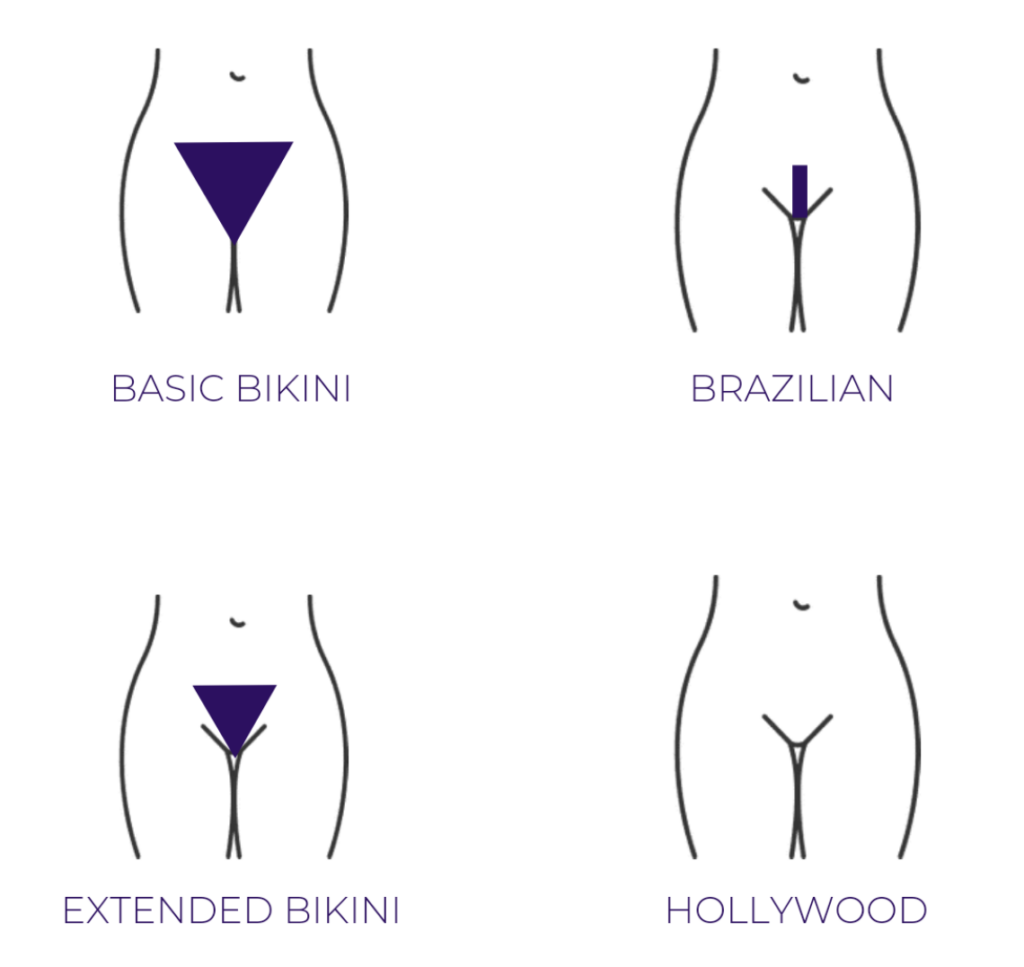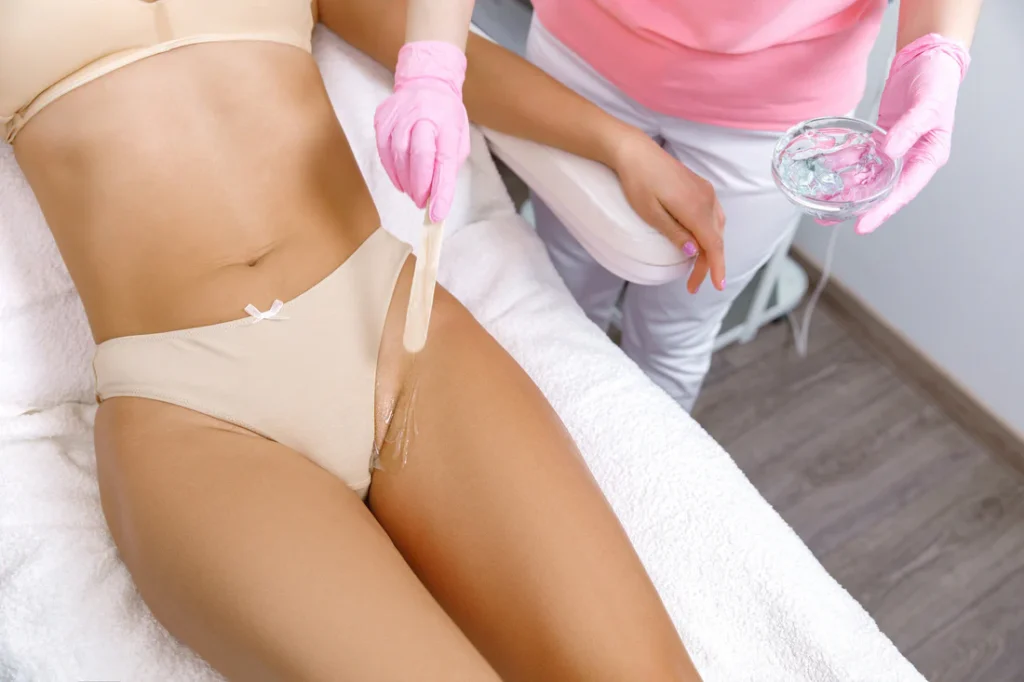Bikini waxing has become a popular method for achieving smooth, hair-free skin in the bikini area. Whether you’re preparing for a beach vacation or simply prefer the clean look, it’s essential to be informed about the process. Before scheduling your first appointment or returning for another session, there are several important things you should know to ensure the experience is as smooth as possible.
In this blog, we will cover the basics of bikini waxing, address common concerns, and provide you with essential tips to make the experience comfortable and effective. Whether you’re new to waxing or looking for ways to improve your results, this guide will help you prepare.
What is Bikini Waxing?

Bikini waxing is a hair removal method that involves applying warm wax to the skin and then quickly removing it along with unwanted hair. This is typically done in the bikini area, which includes the sides, top, and sometimes the front and back of the bikini line.
Key terms to know:
- Hard wax: This type of wax hardens on the skin and is removed without the use of cloth strips. It’s often preferred for sensitive areas like the bikini line.
- Soft wax: This wax is applied in a thin layer and removed with a cloth strip. It’s typically used for larger areas of the body.
- Bikini line: The area just outside the edges of your swimsuit or underwear.
Bikini waxing can vary depending on the amount of hair removal you want. There are several options:

- Bikini line: Removes hair that would show outside a standard bikini.
- Brazilian wax: Removes all hair from the front to the back, leaving the area completely bare.
- French wax: A variation of the Brazilian where a small strip of hair is left at the front.
Common Concerns and Considerations
Before going for a bikini wax, it’s essential to be aware of a few common concerns and tips to ensure you’re fully prepared.
1. Pain
Waxing can cause discomfort, especially in the sensitive bikini area. The pain level varies from person to person, but it’s often described as a quick sting or pull. The more regularly you wax, the less painful it becomes.
2. Skin sensitivity
Your skin may be sensitive after waxing. Redness, bumps, or slight irritation are normal reactions. These usually subside within a few hours. To minimize irritation, avoid tight clothing and refrain from touching the area unnecessarily.
3. Hygiene
Before your appointment, it’s a good idea to exfoliate the skin to remove dead skin cells and avoid ingrown hairs. However, do not exfoliate the day of your appointment, as this can make the skin more sensitive.
4. Time between waxing sessions
For optimal results, it’s best to wait 3 to 4 weeks between waxes. This allows the hair to grow back to the right length for effective removal.
Treatment Options and Best Practices
If you’re planning to get a bikini wax, here are some helpful tips and best practices to ensure a smooth experience:
1. Choosing a qualified professional
Choose a reputable salon with trained professionals who specialize in bikini waxing. Make sure the salon maintains a high standard of hygiene and uses clean tools for every client.
2. Preparing your skin
- Exfoliate a day before: Gently exfoliating helps to remove dead skin cells and reduce the risk of ingrown hairs.
- Avoid sun exposure: Avoid sunbathing for 24-48 hours before waxing, as this can increase sensitivity and irritation.
3. Aftercare
- Avoid hot showers or baths immediately after your wax. The heat can irritate the skin.
- Use aloe vera: This natural gel can help soothe and calm the skin after waxing.
- Wear loose clothing: Tight clothing can rub against the waxed area and cause discomfort or irritation.
4. Avoid these habits
- No shaving: Resist the urge to shave between waxing sessions, as this can interfere with the hair growth cycle and make future waxing less effective.
- Limit exfoliating: While gentle exfoliation can prevent ingrown hairs, avoid scrubbing too hard as it can irritate freshly waxed skin.
Expert Recommendations for a Smooth Experience
Here are some expert tips to enhance your bikini waxing experience:

- Hydrate: Drink plenty of water before your appointment to help keep your skin in good condition.
- Schedule your appointment strategically: Try to schedule your wax a few days after your menstrual cycle ends, as your pain tolerance is typically higher.
- Pain relievers: Some people find that taking an over-the-counter pain reliever like ibuprofen before their appointment can reduce discomfort.
- Stay calm: Anxiety can heighten the pain. Try to stay relaxed during the procedure to help make it as comfortable as possible.
Mumbai Cosmetic Centre provides a range of transformative beauty treatments, including laser hair removal, HIFU facial tightening, and bikini hair reduction. With their extensive qualifications and expertise, they provide professional, safe, and effective treatments for all your cosmetic needs. Whether you’re looking for a bikini wax, laser hair removal, or skin rejuvenation, their team offers the latest technologies to ensure optimal results.
For more information or to book an appointment, contact Mumbai Cosmetic Centre
FAQs About Bikini Waxing
1. How long does a bikini wax last?
Bikini waxes typically last between 3 to 4 weeks, depending on your hair growth cycle.
2. Is a bikini wax safe?
Yes, when performed by a qualified professional, bikini waxing is a safe method of hair removal.
3. Can I get a bikini wax if I have sensitive skin?
Yes, but it’s recommended to inform your esthetician beforehand so they can take extra precautions and use products suited for sensitive skin.
4. What should I do if I experience irritation after a bikini wax?
If you experience irritation, apply aloe vera gel to soothe the skin. Avoid hot baths, tight clothing, and sun exposure for at least 24 hours.
5. Can I wax during my period?
It’s generally okay to wax during your period, but be aware that your pain tolerance might be lower during this time. Wearing a tampon or menstrual cup is advisable.
After a bikini wax, you’ll enjoy smooth, hair-free skin for weeks. Following these tips and preparing adequately for the procedure can make your experience as smooth as possible. Always consult with a qualified professional and follow the aftercare advice to get the best results.
